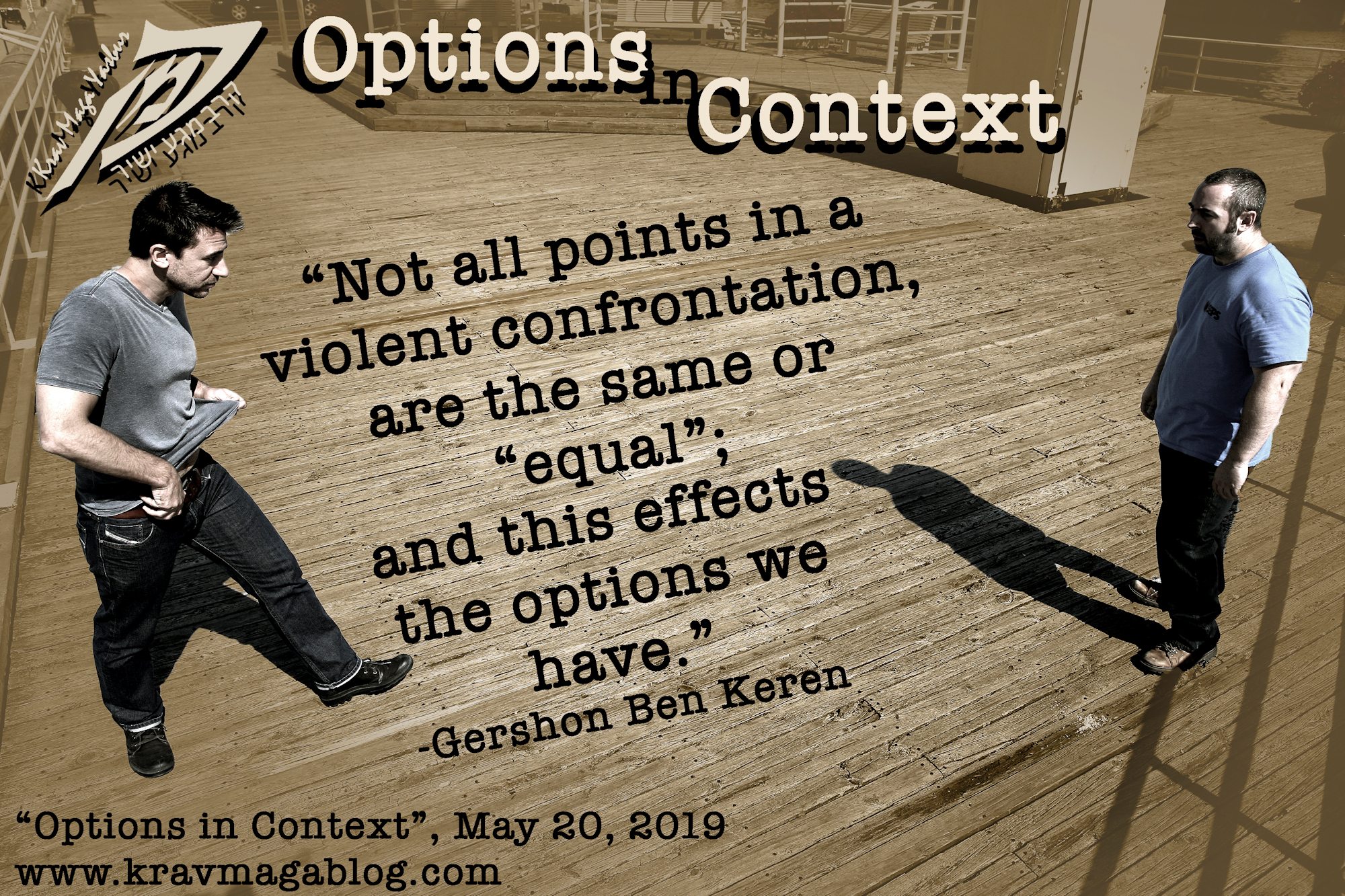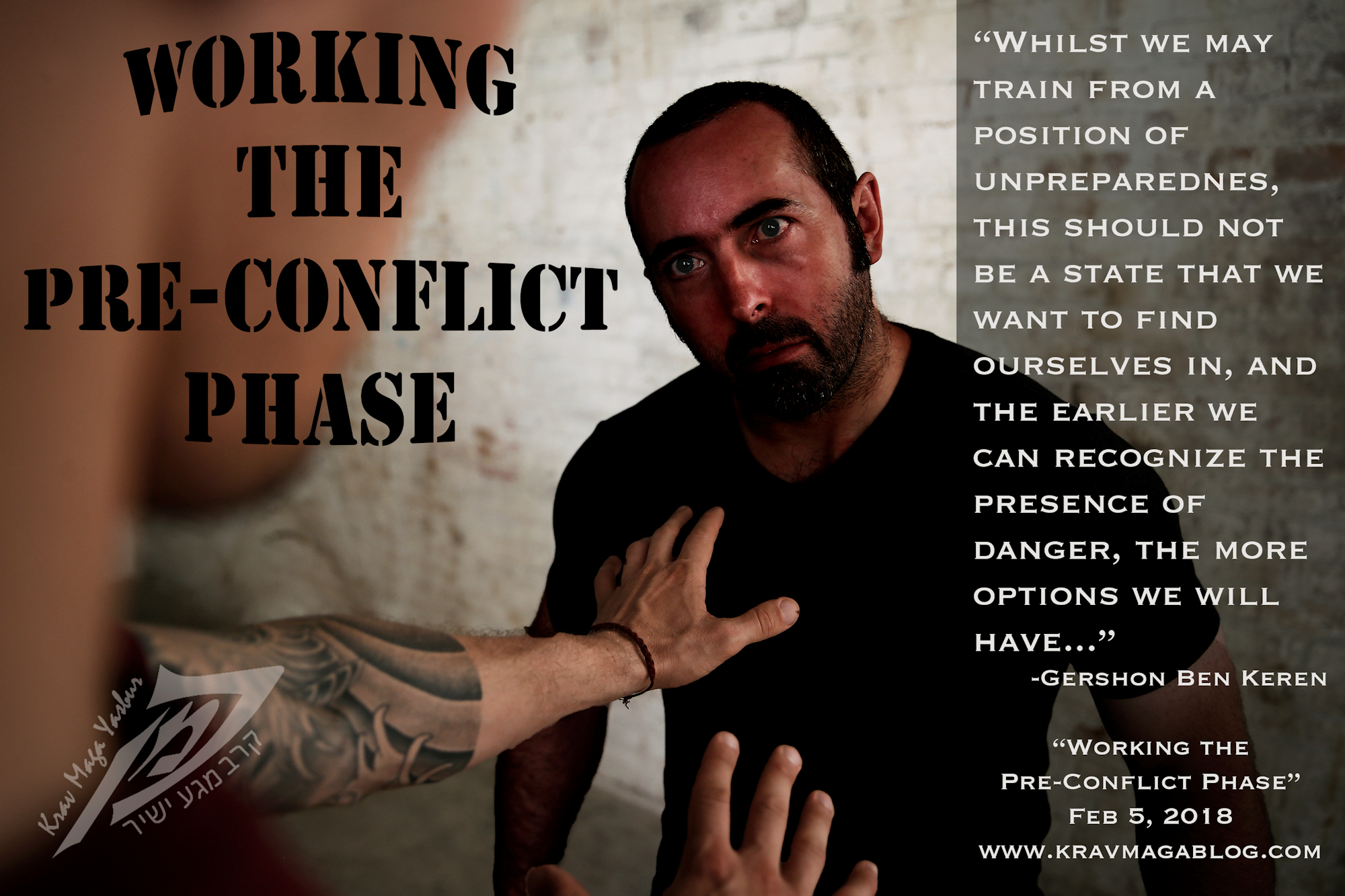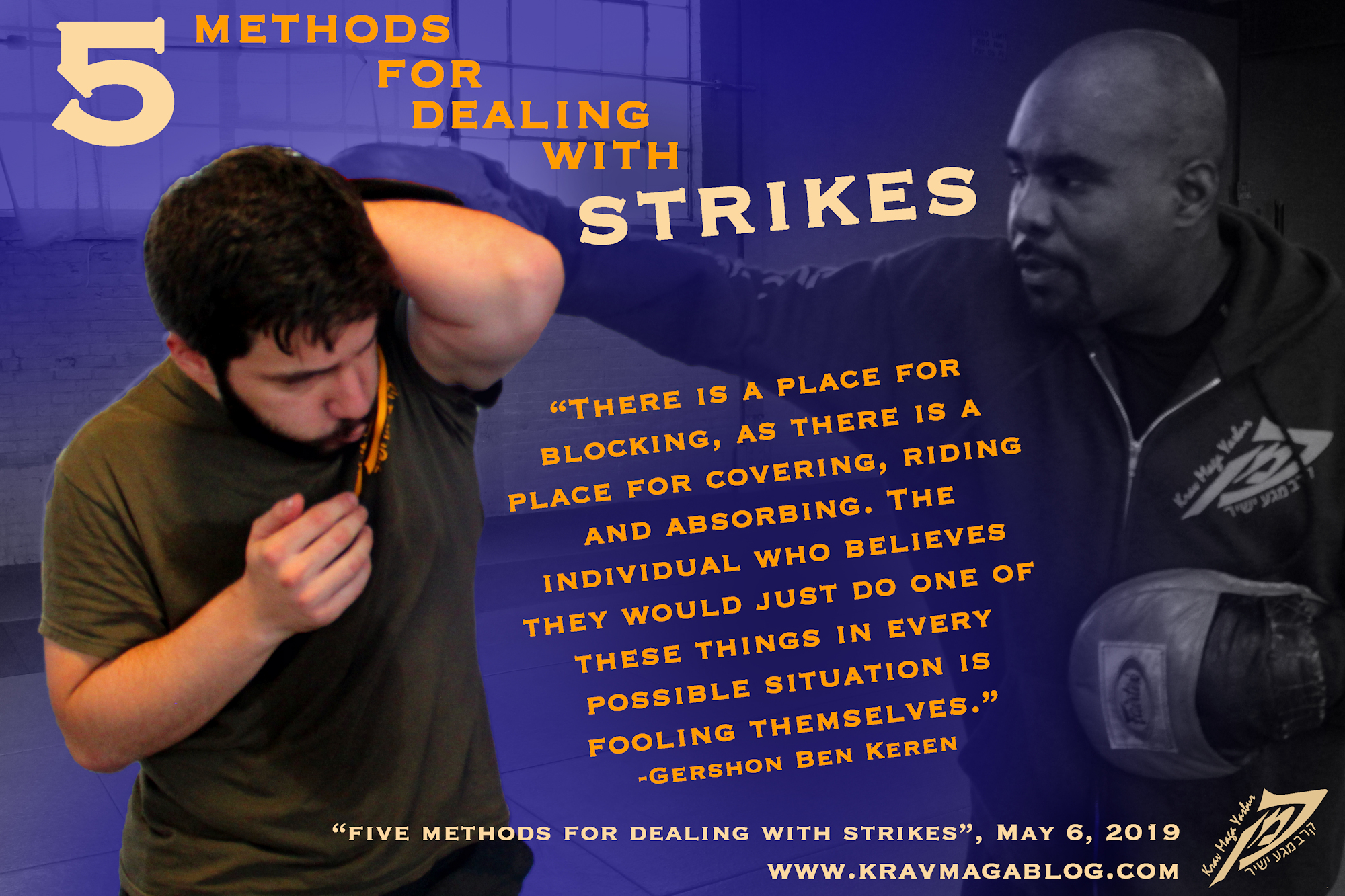Training To Improvise, is an article written by Gershon Ben Keren, a 5th Degree Black Belt in Krav Maga, who teaches Krav Maga in Boston, MA. He has also authored three Amazon best-Selling Books on Krav Maga.
I’ve written about improvised weapons before, explaining the categorization system that was taught to me by Avi Moyal of the IKMF (International Krav Maga Federation), and the differences between “weapons of carry” (things that you have about your person) and “weapons of opportunity” (things in the environment), etc. I haven’t, however, written much about “drilling” the use of said weapons. Before I go into some of the drills I have used, and teach, it is important to understand what we mean by “improvised”, as there seems to be a level of confusion around this. If you teach somebody how to fight with a chair (and there are many merits to this), you are not really teaching somebody to improvise a weapon, you are instructing them on how to use a chair as a weapon. This may seem a subtle difference/distinction, but it is an important one: if a chair isn’t available in their environment, the skill they have learnt isn’t applicable. If they are taught to improvise, they should be able to use everything in the environment as a weapon of some sort. That is not to say there isn’t value to teaching people how to use specific objects as weapons, but recognizing other objects as weapons is what improvisation truly is.
Another important point to bear in mind is that if you don’t know how to use a stick or baton, you won’t magically acquire this skill, when you recognize that an umbrella or similar object resembles a stick/baton, and could be used as such. The idea of an improvised weapon, can sometimes overtake the fact that we don’t know how to effectively use the object. The weapon could even be a hindrance to us if we must think about its use, before defending ourselves with it. This is why I believe it is important to train in the basic use of knife and stick, to understand the strengths and weaknesses of both weapons e.g. a stick/baton when swung, really only delivers power in the last third of its length, unless it is extremely heavy. Trying to swing an umbrella, or similar, at somebody who is charging you down is probably not the best use of it, as hitting a fast-moving target in exactly the right spot when under stress and duress, without having trained this skill using a baton, is probably not going to be successful. Anyone who has drilled stick versus knife, will soon be aware of the limitations of a baton against a determined attacker intent on stabbing you. The last thing you want to do in a real-life confrontation is pick something up that you have no skill in using (this is the same when you disarm somebody of a weapon).
It should also be noted that you need to first possess the intent to use the weapon you’ve chosen e.g. could you smash a bottle, and then stab and grind it into somebody’s face, etc. In my experience, instructors often overrate their student’s ability to use extreme violence – and this needs to be trained. If a student is unable/unwilling to use a bottle in this fashion, they may be better (and there are also other good reasons for this) to not smash it, but to use it as an impact weapon. We need to be realistic in what we can expect ourselves and our students to do – if you only teach your students to tap and rack after disarming a firearm, you are directing them to behave/act in a way they may not be able to perform i.e. are they comfortable with the idea of using the firearm to take a life, if their attacker moves/comes towards them? Don’t fall into the trap of always training that a fight stops when a weapon is disarmed. If a student lacks the skills and intent to use a weapon, whether improvised or not, then it may in fact prove a hindrance to their survival.
The most effective way I’ve found to train students in improvised weapons is to teach them the basic categorization system, and then give them a variety of objects to use, discussing the relative merits afterwards. Some of the “weapons” that always spark a good discussion are water bottles. Most of my students use/have them, and they come in a variety of sizes and materials, which can determine their use. Often the first thing a person will do, is pick it up and use it as an extension of their hammer-fist. If you then give them a kick shield or similar to strike into, they find that they can’t properly hold onto it when they start to try and strike with force – they can with two hands, but that then restricts their ability when they are dealing with a dynamic attacker(s); they will need their other hand to control range and set up their strikes. Often, they will find that using it as an extension of a palm heel strike, held and delivered forward - using the side, rather than the bottom, of the bottle as the striking surface - is more effective e.g. they can deliver more power, and their strike is harder to block, etc. Training this way gives them a more personalized approach to improvised weapons e.g. not everybody’s hand is the same size or their grip strength equal, etc.
Once they have an appreciation of the different uses and strengths of various objects, they must learn to recognize them in their everyday environments, and visualize using them. I am writing this in a Starbucks; within easy reach, there are chairs that can be used as shields (further away there are high stools that would have a greater reach), tables that can form an environmental advantage when used as a barrier (as well as striking surfaces), hot coffee that can be thrown, a glass bottle that would make a solid striking unit, or could be smashed, etc. These are my weapons of opportunity. I also have on me coins that could be thrown, keys that could be thrown – one that I could cut/slash with – and a mobile phone that when held would focus the power of a hammer-fist strike, etc. I then go through the process of visualizing an incident, in which these different tools are used. Repeating this exercise, your eyes will soon be naturally drawn to objects, the moment you enter a room, rather than having to consciously search for them.
Being able to improvise a weapon out of the objects around us is a skill that we and the higher-functioning primates share – it’s one of the things which has ensured our survival, and is a very “human” way to fight. However, because we have become so out of touch with violence in our daily lives, we now need to rediscover and retrain these skills.
0 COMMENTS














